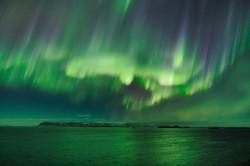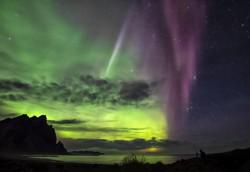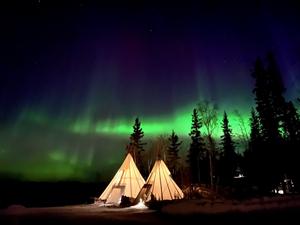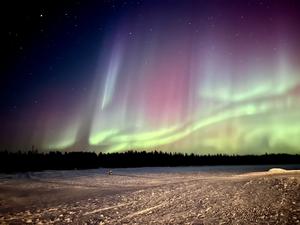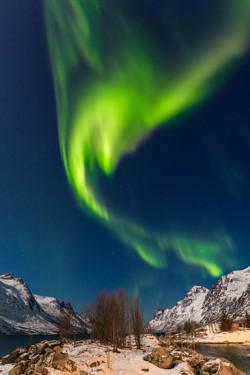Glossary term: Tempête géomagnétique
Description: Outre les radiations électromagnétiques émises par le Soleil, il existe un flux constant de particules chargées quittant le Soleil, connu sous le nom de vent solaire. Certains types d'activité solaire - les éruptions solaires et les éjections de masse coronale, plus spectaculaires - peuvent soudainement et radicalement augmenter la quantité de particules chargées quittant le Soleil, créant une onde de choc au sein du vent solaire, qui se déplace vers l'extérieur. Si des parties de cette onde de choc atteignent notre planète, elles interagissent avec le champ magnétique terrestre, créant une tempête géomagnétique (parfois également appelée tempête solaire). Les conséquences vont de l'inoffensif - l'augmentation et l'embellissement des lumières polaires (aurores) - aux interactions néfastes qui peuvent endommager les satellites, perturber les émissions et, dans les cas extrêmes, perturber les réseaux électriques.
Related Terms:
See this term in other languages
Term and definition status: The original definition of this term in English have been approved by a research astronomer and a teacher The translation of this term and its definition is still awaiting approval
The OAE Multilingual Glossary is a project of the IAU Office of Astronomy for Education (OAE) in collaboration with the IAU Office of Astronomy Outreach (OAO). The terms and definitions were chosen, written and reviewed by a collective effort from the OAE, the OAE Centers and Nodes, the OAE National Astronomy Education Coordinators (NAECs) and other volunteers. You can find a full list of credits here. All glossary terms and their definitions are released under a Creative Commons CC BY-4.0 license and should be credited to "IAU OAE".
If you notice a factual or translation error in this glossary term or definition then please get in touch.
Related Media
Iceland aurora, by Emanuele Balboni, Italy
Credit: Emanuele Balboni/IAU OAE
License: CC-BY-4.0 Creative Commons Attribution 4.0 International (CC BY 4.0) icons
Aurore multicolore en Islande, par Marco Migliardi pour l'Associazione Astronomica Cortina, Italie
Credit: Marco Migliardi au nom de l'Associazione Astronomica Cortina/IAU OAE.
License: CC-BY-4.0 Creative Commons Attribution 4.0 International (CC BY 4.0) icons
Aurores boréales et Tipis
Credit: Oanh Vuong/UAI OAE (CC BY 4.0)
License: CC-BY-4.0 Creative Commons Attribution 4.0 International (CC BY 4.0) icons
Northern Lights Color
Credit: Jason Johnson/IAU OAE (CC BY 4.0)
License: CC-BY-4.0 Creative Commons Attribution 4.0 International (CC BY 4.0) icons
Northern light dragon over Ersfjordbotn/Norway
Credit: Rainer Sparenberg/IAU OAE
License: CC-BY-4.0 Creative Commons Attribution 4.0 International (CC BY 4.0) icons
